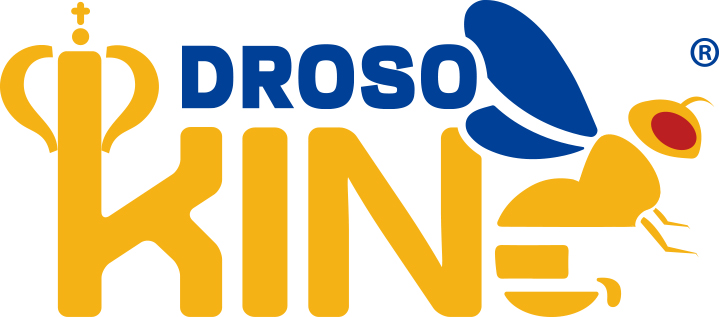This year's event has concluded.
Thank you to sponsors and participants for a great meeting!
~~~
8th Annual Boston Area Drosophila Meeting
sponsored by:
DrosoKING, a Biologix Group Company, provides premium products tailored for drosophila research. All our offerings proudly hold ISO and CE certifications for quality and compliance. With the emphasis on safety, innovation, and efficiency, we welcome you to unleash the full spectrum of drosophila experimentation through our diverse, quality-assured products.
Company website: DrosoKING and Biologix USA, Inc.
ABB has made the world's first collaborative robot that can transfer fruit flies between vials without the need for anesthesia. This new robot can revolutionize the maintenance and transfer of Drosophila strains, a task that previously consumed countless hours of manual labor in labs and stock centers globally.
Website: Life Sciences and healthcare | ABB Robotics - Industries | ABB Robotics
Local organizers
Neal Silverman, PhD, Professor of Medicine
Phillip Zamore, PhD, Gretchen Stone Cook Professor of Biomedical Sciences
Andreas Bergmann, PhD, Professor of Molecular, Cell and Cancer Biology
Travis Thomson, PhD, Assistant Professor of Neurobiology
Schedule
9:00 AM Registration, 1st Floor Lobby, Albert Sherman Center
Session I: (Albert Sherman Center; AS2.2102 Auditorium)
Moderators: Panos Velentzas, Instructor, UMass Chan and Lucas Restrepo, Graduate Student, UMass Chan, Heya Zhao, Postdoctoral Fellow, UMass Chan
9:30 AM Opening remarks: Travis Thomson, PhD, Assistant Professor of Neurobiology, UMass Chan
9:40 AM Peter M’Angale, PhD, UMass Chan
Cryo-EM Structure of the Copia Capsid hints at Structural Antagonism with dArc1 to Regulate Synaptic Plasticity
9:55 AM Mikhail S. Klenov, PhD, RNA Therapeutics Institute, UMass Chan
Piwi and piRNAs Repress Transcription of Aberrant rRNA Genes containing Retrotransposon Fragments
10:10 AM Ratna Chaturvedi, PhD, UMass Chan
A Glia-Enriched Transporter Controlling Sleep in Drosophila
10:25 AM Emily Rivard, Harvard University
Evolving Molecular Mechanisms of Fate Specification within the Drosophila Genus
10:40 AM Coffee Break (Outside Auditorium)
11:00 AM Roger White, University of Rochester
Monitoring fatty acid trafficking in follicles reveals a critical role for the triglyceride synthase DGAT1 in protecting mitochondrial integrity
11:15 AM Torrey Mandigo, PhD, Massachusetts General Hospital, Harvard
Dissecting the Causal Role of Insomnia in Cardiovascular Disease
11:30 AM Indrayani Waghmare, PhD, UMass Lowell
Understanding Glypican-Based Mechanisms of Extracellular Wnt Distribution
11:45 AM Amelie Raz, PhD, Whitehead Institute, MIT
Combinatorial signal integration in the maintenance and renewal of adult germline stem cell fate
12:00 PM Aditya Tandon, Project Engineer, ABB Inc.
Automated Drosophila Transfer Solution for stock maintenance in cardboard racks without use of anesthesia
12:05 PM Lunch (Medical School; Faculty Conference Room S1-342)
1:00 PM Poster Session (Lobby in Medical School Building) (click for full list of posters)
Session II: (Albert Sherman Center; AS2.2102 Auditorium)
Moderators: Prathibha Yarikipati, Postdoctoral Fellow, UMass Chan, Molly Murphy, Graduate Student, UMass Chan and Bao Ho, Graduate Student, UMass Chan
3:00 PM Loiselle Gonzalez-Baez, Boston College
Melanization Regulates Wound Healing by Limiting Polyploid Cell Growth in the Drosophila Abdominal Epithelium
3:15 PM Sarah Crawford, PhD, Southern Connecticut State University
Innate Immune System Involvement in Brain Tumor Formation in Drosophila melanogaster Brat mutant: A Research Model of Pediatric Brain Tumor Development
3:30 PM Nelson Lau, PhD, Boston University
Traffic jam regulates the Drosophila piRNA cluster flamenco via novel shadow enhancer elements to ensure female fertility
3:45 PM Lianne Cohen, PhD, Boston University
Identifying the Enhancers and Regulatory Logic of the Drosophila Innate Immune System
4:00 PM Pushpa Verma Sharma, PhD, Harvard Medical School
Brain specific microRNA mediated regulation of metabolic homeostasis in Drosophila melanogaster
4:15 PM Coffee Break (Outside auditorium)
4:45 PM Yu-Chieh David Chen, PhD, New York University
Codes of cell surface proteins coordinate stochastic and deterministic cell fates during Drosophila color vision circuit assembly
5:00 PM Ting Miao, PhD, Harvard Medical School
Role of Malpighian tubule-specific Coenzyme A biosynthesis in systematic metabolic control and maintenance of tissue homeostasis in high-turnover tissues
5:15 PM Vanitha Nithianandam, PhD, Brigham and Women's Hospital, Harvard Medical School
Integrative Multi-Omics Analysis Reveals a Conserved Role for the Amyloid Precursor Protein in Proteostasis
5:30 PM Beverley Matthews, PhD, Harvard University
New and Classic Features in FlyBase
5:45 PM Speaker Introduction: Phillip Zamore, PhD, Gretchen Stone Cook Professor of Biomedical Sciences, UMass Chan
5:50 PM Yukiko Yamashita, PhD, Whitehead Institute, MIT
Asymmetric cell divisions in Drosophila
7:00 PM Closing remarks: Neal Silverman, PhD, Professor of Medicine, UMass Chan
Poster presentations
2 Xuefeng Meng, Whitehead Institute
Asymmetric segregation of Stellate during meiosis leads to meiotic drive in Drosophila melanogaster
3 Mónica C. Quiñones-Frías, Brandeis University
The ER shaping protein Atlastin regulates synaptic ER tubule integrity and dynamics
6 Anne M Silveira, Brandeis University
Shared and Distinct Functions of the Dynamin Isoforms at Drosophila synapses
7 Pakinee Phromsiri, University of Rochester
Drosophila H2A.Z regulates developmental timing and the global transcriptome
8 Noshin Nawar, Boston University
Developing a Quantitative Understanding of Heterogeneity in Drosophila melanogaster’s Innate Immune Responses
9 Alex Dyson, Massachusetts General Hospital
MEK Inhibition as a Potential Therapeutic Strategy for the Non-Tumor Manifestations of Neurofibromatosis Type 1 (NF1)
10 Elizabeth Lane, Harvard Medical School
Drosophila as a Model to Study the Intestine in Cystic Fibrosis
13 Torrey Mandigo, Massachusetts General Hospital
Dissecting the Causal Role of Insomnia in Cardiovascular Disease
14 Jillian Ness, Boston University
Exploring the Functional Role of Shadow Enhancer Architecture in Development
15 Camilla Regalia, Brown University
Characterization of Protein Processing and the Endoplasmic Reticulum Pathway in a Drosophila Model of Amyotrophic Lateral Sclerosis
16 Jorel R. Padilla, Boston College
Crosslinking of Microtubules and Actin is Necessary to Maintain Myonuclear Spacing
17 Amelie Raz, Whitehead Institute
Combinatorial signal integration in the maintenance and renewal of adult germline stem cell fate
18 Lucas Restrepo, UMass Chan Medical School
A mitochondrial surface protein regulates Vps13D-dependent mitophagy
19 Kaylah B Samuelson, University of Connecticut
Elucidating the role of Polo kinase activity and regulation in the meiotic drive of B chromosomes in D. melanogaster
20 Jacob Paiano, Harvard Medical School
Constructing Inter-Organ Communication Networks of Cellular Stress Responses
21 Nathan Brownstein, Brandeis University
Oligonucleotide directed proximity interactome mapping to study RNA-protein interactions in Drosophila
22 Ben Ewen-Campen, Harvard Medical School
The proventriculus contains a ring of cycling cells that responds to local and systemic signaling
23 Ben Ewen-Campen, Harvard Medical School
Wnt signaling modulates the response to DNA damage in the Drosophila wing imaginal disc by regulating the EGFR pathway
24 Michael Allara, UMass Boston
The Toll Pathway Regulates Crystal Cell Production
25 Vanitha Nithianandam, Brigham and Women's Hospital, Harvard Medical School
Integrative Multi-Omics Analysis Reveals a Conserved Role for the Amyloid Precursor Protein in Proteostasis
26 Younshim Park, Harvard Medical School
Metabolic reprogramming in tumors: a Drosophila model to decipher isoform dynamics
27 Ankita Singh, Harvard Medical School
A proximity-tagging system to identify secreted interorgan communication factors
28 Carolina I. Ferrer, UMass Boston
The Immune Signaling pathways Toll and Imd play a role in Drosophila Hematopoiesis
29 Pooja Rai, UMass Chan
Studying non-apoptotic functions of caspases using Drosophila
30 Sofia Gaibor, Harvard Medical School
Assessing enhancer necessity during the early development of Drosophila melanogaster
31 Caileigh Pierce, Harvard Medical School
Different Bicoid domains are required at different target genes to regulate gene expression
32 Stephanie Mohr, Harvard Medical School
New technologies and resources from the Drosophila Research & Screening Center-Biomedical Technology Research Resource (DRSC-BTRR)
33 Yu Yang, Boston University
Illuminating the non-genetic factors of immune activation
34 Jessica Sidisky, MIT
Characterizing Synapse Formation, Maturation and Turnover at Drosophila Adult Neuromuscular Junctions
35 Chhavi Sood, MIT
Disruption in Calcium Conductance of Cacophony Channels Alters VGCC Abundance and Retention at Active Zones
36 Alok Tiwary, RNA Therapeutics Institute and Howard Hughes Medical Institute, UMass Chan Gametocyte Specific Factor 1 (GTSF1) in PIWI Protein Functions
37 Xihuimin Dai, Brandeis University
Four SpsP neurons are an integrating sleep regulation hub in Drosophila
38 Suraj R. Math, Center for Genomic Medicine, Massachusetts General Hospital
A Drosophila Model of a Rare Congenital Disorder of Glycosylation associated with ALG10
39 Yongjin Lee, RNA Therapeutics Institute and Howard Hughes Medical Institute, UMass Chan
Inhibition of Integrator and Nuclear Exosome Targeting Complexes causes emergence of atypical transcripts and disrupts oogenesis in Drosophila melanogaster
40 Julia Apiki, Whitehead Institute
Role of Protamine mRNA Localization During Spermatocyte Development in Drosophila melanogaster
41 Adriano Biasini, RNA Therapeutics Institute, UMass Chan
The Integrator and Nuclear Exosome Targeting Complexes are Essential for Drosophila Oogenesis.
42 Nicolas Arriaga Otalora, Brown University
Investigating the Role of PDZD8-Mediated Membrane Contact Sites in Promoting Synapse Maintenance
43 Georgette-Vanelle Wandji, Boston University
Subcellular Mechanism of Programmed Cell Death in Drosophila Ovarian Nurse Cells
44 Teng Long, University of Connecticut
Odorant Receptor Co-receptors affect expression of tuning receptors in Drosophila
45 Jonathan Zirin, Harvard Medical School
New from the TRiP: large scale resources for gene perturbation, gene expression, and protein detection
46 Julia Birnbaum and Eric Gomez, Brandeis University
Investigating the Role of Nervous Wreck in Circadian Circuitry
47 Shania Kalladanthyil, University of Connecticut
New Insights into the Structure and Formation of the D. melanogaster B Chromosome
48 William McKenna, Harvard Medical School
From Fly to Tick: Establishing Pooled CRISPR Genetic Screens in Cultured Tick Cells
49 Ryan Gossart, Brandeis University
Cell-Type-Specific Isoform Usage in the Drosophila Visual System
50 Abhi Bhattarai, Wesleyan University
Organization of apical-cortical F-actin in the primary pigment cells of the Drosophila pupal eye
51 Rory Golden, UMass Boston
The Effect of Microbiome on Injury Response in Drosophila Melanogaster
52 Anna Shlimak, Brown University
Imaginal disc growth factors identified as candidate suppressors for Drosophila models of TDP43, FUS, C9orf72, and Sod1 ALS
53 Ryan M. Gado, University of Connecticut
Investigating the Influence of the TM3, Sb Ser Balancer Chromosome on the Female Meiotic Drive of B Chromosomes in D. melanogaster
54 Mengjia Lin, University of Connecticut
Investigating the dynamics of biased B chromosome segregation during female meiosis in Drosophila melanogaster
55 Meredith Becher and Geoffrey Tanner, University of Connecticut
Ketone body supplementation in a standard high-carbohydrate diet induces autophagy-mediated developmental delay in feeding third instar Drosophila larvae
56 Dionna DeFazio, College of the Holy Cross
Neuropile Ensheathing Glia Modulate Seizure Susceptibility of Drosophila melanogaster
57 Sydney Bailey, UMass Boston
Understanding the expression profile of Hmx in Drosophila melanogaster
58 Catherine R. Carmona, Brandies University
The Molecular Mechanisms of the Development of Polarized Dendrites in the Drosophila Visual System
59 Julianna Faillace, Springfield College
Sequence Analysis of CG15365 as a Potential LZTS1 Ortholog
60 Christopher Abdullah, Springfield College
Predicted GBA2 Ortholog CG33090 Mutants Display Viability and Neuromuscular Phenotypes in Drosophila
61 Arthur Langford, Emmanuel College
Investigating the Spreading Mechanism of the Dosage Compensation Complex on the X Chromosome
62 William Kemball-Cook, Brown University
Role of a putative tRNA methyltransferase in the central nervous system
63 Cynthia Brito, Emmanuel College
Analyzing the role of RSF1 in variant Polycomb Repressive Complex 1.1 in Drosophila
64 Lindsay Carlson, Clark University
Modeling the transcriptional regulation of the twin of eyeless gene in Drosophila melanogaster
65 Anthony D. McDougal, MIT
Bitesize Drives Actin Remodeling and Bundling in the Syncytial Drosophila Embryo
66 Jacob Malin, Tufts University School of Medicine
The Arf-GEF Steppke Controls Actin Dynamics in Cell Intercalation in the Drosophila Retina
67 Emily Brown, UMass Boston
The Drosophila eye as a model for targeted nanoparticle-based drug delivery.
68 Molly Murphy, UMass Chan Medical School
Plasma Membrane Rupture Protein Ninjurin A Controls Susceptibility of Drosophila melanogaster to Invertebrate Iridescent Virus 6 (IIV6) Infection in a Turandot-Independent Manner.
69 Mathangi Selliah, UMass Boston
The Role of IMD and Toll Immune Signaling Pathways on Crystal Cell Differentiation in Drosophila Melanogaster
70 Rafael Faria, UMass Boston
How Wnt5 and Wnt signaling affect the differentiation of blood cells in Drosophila Melanogaster
71 Angele Louis-Jean, Brandeis University
Cell-type specificity of the glial clock
72 Samaneh Poursaeid, University of Connecticut Health Center
Potential roles of stem cell competition in dedifferentiation of Drosophila male germline
73 Ava Towle, Brandeis University
Investigating the Role of G-Protein Coupled Receptors in Drosophila Thermosensation
74 Md Fakhrul Azad, Boston University School of Medicine
Re-examining how Transposable Elements (TEs) in gene introns are detected by RNAseq inputs and whether they impact RNA splicing and gene expression in Drosophila brain transcriptomes



